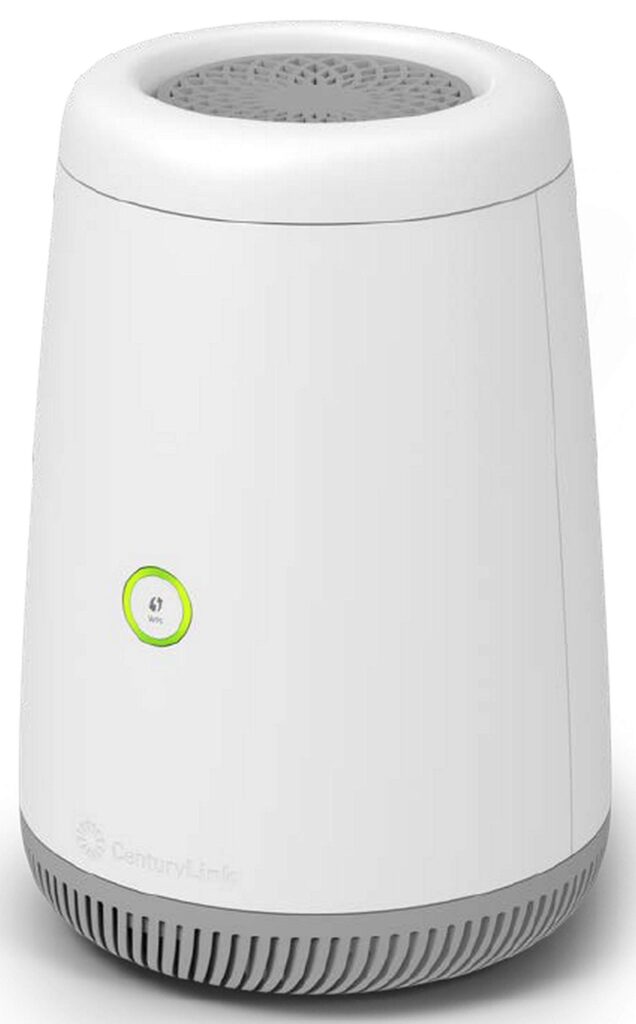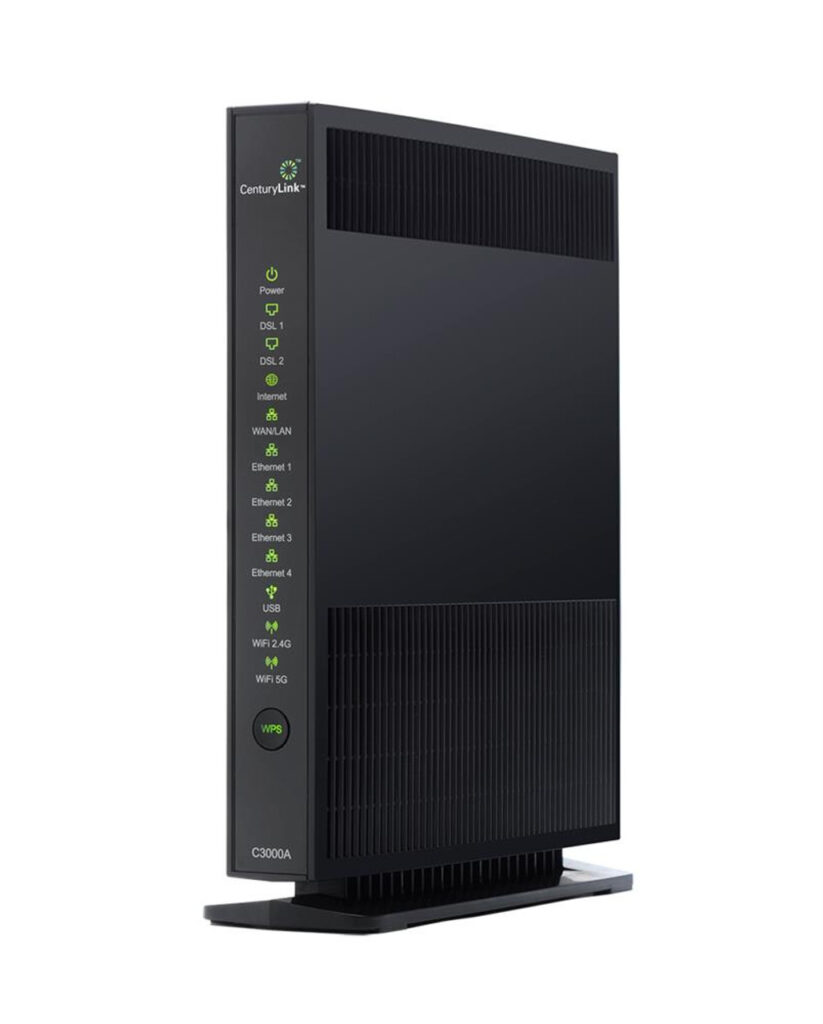Is your CenturyLink modem blinking blue and leaving you feeling like you’re in the middle of a high-tech disco party? Don’t worry, you’re not alone! In this blog post, we’ll dive into the meaning behind that mesmerizing blue light and uncover the reasons why it’s flashing like it’s on the dance floor. But fear not, because we’ve also got some nifty fixes up our sleeves to help you regain control over your modem’s lighting extravaganza. So, grab your dancing shoes and let’s get to the bottom of this blinking blue conundrum!
Deciphering the Blinking Blue Light on Your CenturyLink Modem

CenturyLink Modem
Have you ever wondered about the purpose of the blinking blue light on your CenturyLink modem? It’s not there just for aesthetics, but serves as a vital signal of your modem’s connection status. Much like a lighthouse guiding ships through the fog, this beacon of light directs your internet connectivity journey.
When your modem flaunts a steady blue light, it’s a visual affirmation of a robust and seamless connection. It’s akin to a calm sea under a bright blue sky, a sign of smooth sailing for your digital voyages.
However, if your modem’s blue light persists in a blinking state for more than a duration of 5 to 10 minutes, it’s a call to attention. It’s as if your modem is caught in a tempest, wrestling with the waves to establish a firm and consistent connection.
| Light Status | Meaning |
|---|---|
| Steady Blue | Healthy and active connection. |
| Blinking Blue | Modem is attempting to establish a connection. |
| Blinking Blue (For more than 5-10 mins) | Connection issues are present, requiring attention. |
Regardless of the type of CenturyLink modem you possess, be it XG, BG, or LG, the blinking blue light plays the same role. It’s your modem’s way of communicating that it’s in the process of establishing a connection with the CenturyLink network. Once it has successfully navigated through this process, you will see the light turn a reassuring green.
Read all about: Is 5g internet good for streaming?
The blinking blue light is essentially your modem’s way of telling its tale. It’s a visual narrative of its quest to process the ISP signals and set up a stable connection. The story ends on a happy note with a solid green light, signifying that your modem’s journey has been successful, and your connection is now activated and ready for you to embark on your digital adventures.
So the next time you see that blinking blue light on your CenturyLink modem, you’ll know exactly what it means. It’s not just a light; it’s a tale of connection, of struggles and triumphs, told in the language of light.
Why is Your CenturyLink Modem Blinking Blue?

CenturyLink Modem
Imagine this: you’ve just finished a long day, and all you want to do is relax and catch up on your favorite show. You settle in, only to find your CenturyLink modem flashing a mysterious blue. A symphony of thoughts plays in your mind as you stare at the relentless blinking light. Is it a cryptic Morse code? Is your modem trying to communicate with you? Or worse, is it a sign of an impending digital doom?
Read all about: Is 100 Mbps Fast Enough for 2023? Discover the Capabilities and Performance as well as “Is 1000 Mbps Still Fast in 2023? Discover the Truth with an Infographic and Practical Insights”.
Before you let your imagination run wild, let’s decode the mystery of the blinking blue light. When your CenturyLink Modem is persistently flashing blue, it’s not a sign of any cryptic communication or digital cataclysm. Instead, it’s a signal that your modem is facing some technical hurdles in establishing a stable connection with your Internet Service Provider (ISP).
Several culprits could be behind this flashing blue light. It could be something as simple as a faulty or loose cable not letting the signals pass through smoothly. Or perhaps, it’s a damaged splitter disrupting the signal flow. These are common issues, and more often than not, they are easily fixable.
However, if your cables and splitter are in good shape, the problem may lie outside your home. An internet service outage or maintenance work in your area could be the reason for the blinking light. This would require a bit more patience, as you’d have to wait for your ISP to resolve the issue.
Read all about: What is the problem with viasat?
There’s also a chance that the issue is not physical but digital. Your modem’s firmware could be outdated, causing it to struggle in establishing a solid connection with your ISP. Or there could be other technical issues at play.
Regardless of the cause, the pulsing blue light on your modem is not a cause for panic. It’s merely your modem’s silent way of telling you that it’s facing some difficulties and needs your attention. With a little bit of troubleshooting, you can restore your modem’s functionality and get back to your digital adventures.
In the following sections, we will dive deeper into these issues, exploring each cause in detail and providing you with effective solutions. So, hold tight and let’s embark on this troubleshooting journey together!
Diving Deeper: Pinpointing Causes and Crafting Fixes for the Blinking Blue Light

CenturyLink Modem
Imagine a quiet night, when you’re about to start an online meeting or stream your favorite series, and you notice the CenturyLink modem blinking blue. It’s like a mystery novel, isn’t it? The blinking blue light is like the enigmatic protagonist, and you’re the dedicated detective on a mission to uncover the truth. Let’s delve into this technological enigma and explore some potential causes and fixes.
Read all about: Does fiber internet work without electricity?
Inspecting Cables & Splitter: The Hidden Culprits
Just like a well-plotted mystery, the first suspects are often the ones overlooked – your cables and splitter. Loose or faulty connections could be secretly sabotaging your internet connection, leading to that blinking blue light on your modem. Inspect the cables connecting your modem and the wall jack. Check for any loose ends or signs of damage. The splitter too deserves your attention. Should you discover any defects, don’t hesitate to replace the faulty parts. It’s like swapping an unreliable character out of your mystery novel plot!
The Power Cycle: A Simple Yet Mighty Solution
Just as a good detective takes a step back to reassess the situation, power cycling your CenturyLink modem can offer a fresh perspective to your modem and potentially stop the blue light from blinking. Switch it off, pause for a moment, then restart it. This reboot can often rectify minor glitches, restoring the balance in your internet universe.
Internet Outage or Service Maintenance: The Invisible Adversaries
Sometimes, the adversary is unseen. A power outage or maintenance issues at CenturyLink’s end can cause the blue light to blink. It’s like the hidden antagonist in your mystery novel. If your cables are secure and your modem isn’t outdated, it’s wise to contact CenturyLink to check for any outage or maintenance information.
Preventing Overheating: The Subtle Threat
If your modem is hot to the touch, it could be overheating. Just like in a suspense thriller, this subtle threat could lead to the blinking blue light. Disconnect less critical connections to reduce the load, and allow the modem to cool down. Consider placing the modem in a well-ventilated area, akin to giving your lead character a breath of fresh air.
Firmware Updates: The Modern Solution
In the digital age, even modems need regular updates. Your modem’s firmware might be outdated, causing our blinking blue protagonist to persist. Compare your modem’s firmware version with the latest one available. If an update is required, proceed with caution. Upgrading firmware without reason can sometimes introduce new issues, much like a plot twist in your mystery novel. If you experience problems post-upgrade, consider downgrading to a more stable version.
Resetting the Modem: The Last Resort
If all else fails, resetting the modem could be your last resort. This is akin to the climax of your mystery novel, where all other methods have failed. Look for the reset button on the back of your modem, but remember, resetting should be the final step, only attempted after all other methods have been exhausted.
Reaching out to CenturyLink Customer Support: The Expert’s Help

CenturyLink Modem
If the reset doesn’t seem to fix the issue, it’s time to call for expert help. Reach out to CenturyLink customer support. They can run a remote test to check the quality of your internet connection, and if necessary, carry out a remote reset of your modem.
Replacing Your CenturyLink Modem: The Final Chapter
If the mystery remains unsolved despite all your efforts, it might be time for a new protagonist – a new modem. However, ensure to replace your CenturyLink modem only if it’s still under warranty. If not, buying a new, highly compatible modem for CenturyLink could be the perfect ending to your modem mystery.
Now that we’ve unraveled the mystery of the blinking blue light, let’s move on to the next chapter in our CenturyLink journey.
Conclusion: Turning the Tide

using internet
Imagine yourself in the midst of a fierce, digital storm, where your CenturyLink modem is your beacon of connection. That pulsating blue light, blinking like a lighthouse on a foggy night, is more than a simple signal. It’s a symbol of your modem’s valiant effort to find the CenturyLink network, like a ship seeking the safety of a harbor amidst the tumultuous sea of data.
Like any experienced sailor, you need to understand the language of your beacon. The blinking blue light is not merely a sign of distress; it’s a call to action. Just as a captain would repair a ship’s sail or adjust its course, so should you respond to this signal from your modem. This means you need to put on your troubleshooting hat and get to work.
Communication with your Internet Service Provider (ISP), the CenturyLink , is your first line of defense. They can confirm if there are any internet outages or scheduled maintenance that could be causing the flashing blue light.
Your second line of defense lies within the physical realm. Check your cables, ensure they are snugly fit, and free from any visible damage. Don’t forget the splitter either. These are small steps but can often be the difference between a blinking blue light and a steady green one.
Now let’s talk about the unsung hero of any electronic device – proper ventilation. Overheating can put unnecessary stress on your CenturyLink modem. Ensure it is placed in a well-ventilated area. If possible, turn it off when not in use. This not only prevents overheating but also gives your modem a much-needed break.
Another potential savior in your troubleshooting journey is firmware updates. These updates could either be your knight in shining armor or a jester causing unnecessary chaos. Proceed with caution and only update or downgrade if necessary.
The last resort is to go all in – a modem reset. This could potentially resolve any minor glitches that are causing the blue light to blink. However, remember to keep this as your last option.
And finally, don’t be too proud to ask for help. CenturyLink’s customer support is equipped with professional troubleshooters who can guide you through the storm.
Remember, each of these solutions is worth trying. And understanding the meaning behind the flashing blue light is half the battle won. So, brave the storm, follow these tips, and let your CenturyLink modem guide you to smoother internet sailing.
Q: What does a blinking blue light on a CenturyLink modem indicate?
A: A blinking blue light on a CenturyLink modem indicates that it is searching for a network connection.
Q: How long should the blue light blink after boot-up before it indicates a problem?
A: If the blue light continues to blink for more than 5 minutes after boot-up, there may be an issue.
Q: What are some potential causes for the blinking blue light on a CenturyLink modem?
A: Potential causes for the blinking blue light include faulty or loose cables, damaged splitter, internet service outage, dated firmware, or technical issues.
Q: How can I fix the blinking blue light issue on my CenturyLink modem?
A: To fix the blinking blue light issue, you can troubleshoot by checking cables, replacing damaged splitters, contacting the internet service provider for outage information, updating firmware, or seeking technical assistance.
